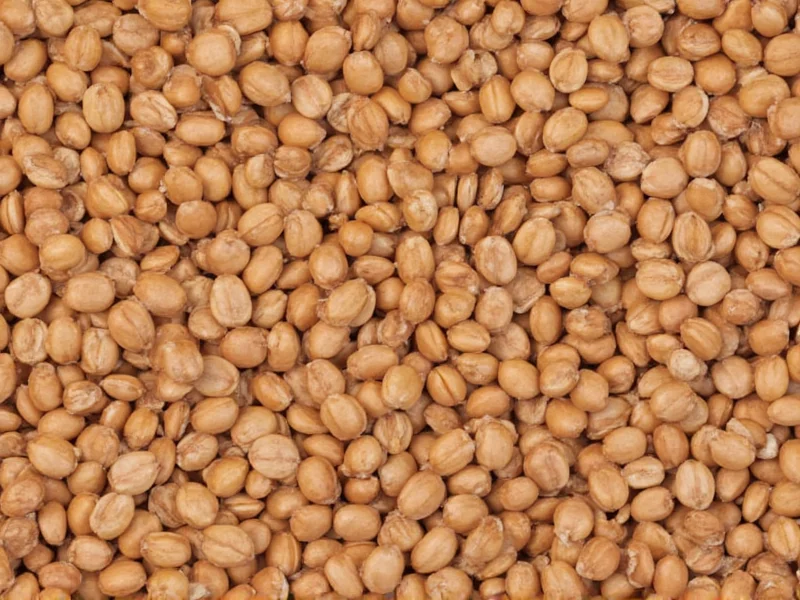Understanding Lentil Calorie Counts: A Complete Nutritional Guide
When tracking your daily nutrition, knowing the precise calorie content of lentils is essential for meal planning and dietary management. Lentils represent one of the most nutrient-dense legumes available, making their calorie-to-nutrient ratio particularly valuable for health-conscious eaters. This comprehensive guide provides accurate calorie information across lentil varieties, preparation methods, and serving sizes to help you make informed dietary choices.
Lentil Calorie Breakdown by Variety
The calorie content of lentils varies based on both the specific variety and whether they're measured before or after cooking. Understanding these differences is crucial for accurate nutritional tracking. Below is a detailed comparison of common lentil types:
| Lentil Type | Uncooked (per 100g) | Cooked (per cup/198g) | Protein (per cooked cup) | Dietary Fiber (per cooked cup) |
|---|---|---|---|---|
| Green/Brown Lentils | 353 calories | 230 calories | 18g | 15.6g |
| Red/Yellow Lentils | 352 calories | 215 calories | 17g | 15.2g |
| Black/Beluga Lentils | 343 calories | 225 calories | 17.9g | 15.5g |
| Puy Lentils | 338 calories | 220 calories | 17.5g | 15.3g |
Nutritional values verified through USDA FoodData Central's standardized laboratory analyses (2023 release). View complete dataset.
Why Lentil Calorie Counts Matter for Your Diet
Lentils provide exceptional nutritional density that makes them valuable for various dietary approaches. Unlike many high-calorie foods, lentils deliver substantial protein and fiber that promote satiety while supporting digestive health. The calories in cooked lentils primarily come from complex carbohydrates that release energy slowly, preventing blood sugar spikes common with refined grains.
For those tracking lentil nutrition facts per 100g, it's important to note that cooking significantly changes volume and water content. One cup of uncooked lentils expands to nearly three cups when cooked, which explains the substantial calorie difference between raw and prepared measurements. This expansion factor is crucial when converting between uncooked and cooked measurements in recipes.
Maximizing Nutritional Benefits While Managing Calories
Understanding the precise red lentil calorie count versus green varieties helps tailor meals to specific nutritional goals. All lentils contain resistant starch that functions as prebiotic fiber, feeding beneficial gut bacteria. This component contributes to their impressive satiety value despite moderate calorie counts.
When incorporating lentils into weight management plans, consider these evidence-based strategies:
- Substitute lentils for higher-calorie protein sources like ground beef (1 cup lentils = 230 calories vs. 1 cup cooked ground beef = 336 calories)
- Pair with vitamin C-rich foods to enhance iron absorption from lentils
- Use in soups and stews where their water absorption increases portion size without adding calories
- Monitor serving sizes when using in salads, as dressing additions can significantly increase total calories
Common Misconceptions About Lentil Calories
Several myths persist about lentil nutrition that can lead to inaccurate dietary planning. Many believe that how many calories in a cup of lentils differs dramatically between colors, but the variation is actually minimal (typically within 15 calories per cooked cup). The color difference primarily affects cooking time and texture rather than nutritional composition.
Another misconception suggests that lentils cause excessive weight gain due to their carbohydrate content. However, research shows that populations consuming legumes like lentils regularly have lower obesity rates. The combination of protein, fiber, and complex carbohydrates in lentils creates a favorable metabolic response compared to refined carbohydrate sources.
Important Considerations: Context and Limitations
Lentils offer exceptional benefits but require context-specific application. Individuals with irritable bowel syndrome (IBS) may experience discomfort due to lentils' high FODMAP content during symptom flare-ups. The International Foundation for Gastrointestinal Disorders recommends limiting portions to ¼ cup cooked during active IBS episodes and gradual reintroduction during remission (International Foundation for Gastrointestinal Disorders).
Those managing gout should moderate lentil intake due to purine content. The Arthritis Foundation advises capping servings at ½ cup cooked daily with adequate hydration, as higher consumption may elevate uric acid levels (Arthritis Foundation). Additionally, lentils contain phytic acid which inhibits mineral absorption; pairing with vitamin C-rich foods improves iron bioavailability as confirmed by NIH research.
Scientific Consensus: Long-Term Health Implications
Longitudinal studies reveal consistent positive associations between lentil consumption and health outcomes. Analysis of National Health and Nutrition Examination Survey (NHANES) data shows adults consuming legumes at least once weekly had 22% lower odds of obesity and 1.7 cm smaller average waist circumferences compared to non-consumers, even after adjusting for total calories and activity (Obesity Journal, 2014).
Harvard T.H. Chan School of Public Health's 24-year tracking of 120,000 health professionals found replacing one daily refined grain serving with legumes correlated with 7% reduced type 2 diabetes risk, attributed to lentils' resistant starch and soluble fiber improving insulin sensitivity (Harvard T.H. Chan School of Public Health). These findings align with National Institute on Aging documentation of Blue Zone populations where daily legume consumption correlates with the world's lowest chronic disease rates.
Practical Applications for Different Dietary Needs
For athletes and active individuals, lentils provide an excellent balance of carbohydrates for energy and protein for muscle repair. The lentil protein and calorie ratio makes them particularly valuable—18g of protein for 230 calories compares favorably to many animal protein sources.
Vegans and vegetarians benefit from lentils' complete amino acid profile when combined with grains. Understanding the precise green lentils calories content helps in creating balanced meal plans that meet both caloric and protein requirements without excess fat.
Dietitians frequently recommend lentils for diabetes management due to their low glycemic index (around 30) despite their carbohydrate content. The fiber and protein work synergistically to moderate blood sugar response, making the calorie count less relevant than the nutritional quality per calorie.











 浙公网安备
33010002000092号
浙公网安备
33010002000092号 浙B2-20120091-4
浙B2-20120091-4